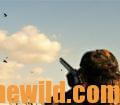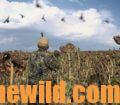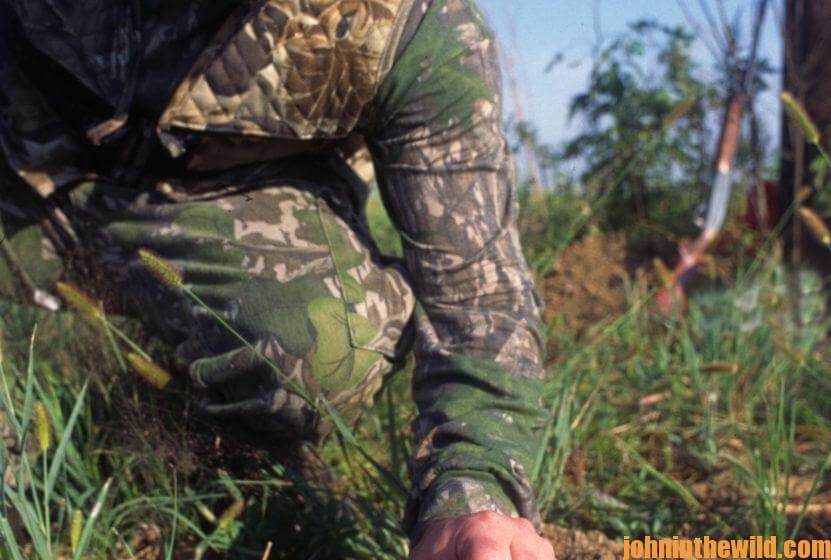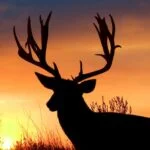Editor’s Note: Dove season starts soon, and nothing’s more fun than tailgating with friends in a dove field to start your hunting season. You can wear masks and socially distance during this pandemic time while hunting doves.
* Train Your Muscle Memory:
When a professional athlete goes into a game, one of his most-important things he/she uses to become successful is muscle memory. Quarterbacks practice for thousands of hours, training their eyes and arms to make quick and accurate calculations to throw accurately when they see a receiver. The throws are automatic and almost instinctive. They don’t look at the ball, they don’t look at  their arms, and they don’t look at anything else except the receivers to whom they want to throw balls. Then once game day comes around, when they throw the ball, the muscle memory in their arms, shoulders, backs, and feet automatically perform the tasks they want to perform to be accurate passers. With that being said, what can you do to shoot as accurately in a dove field as a well-trained quarterback completes passes? You have to build your muscle memory. This way, when a dove is coming in, you can shoot accurately and efficiently without having to go through a long thought process that may keep you from making a good shot.
their arms, and they don’t look at anything else except the receivers to whom they want to throw balls. Then once game day comes around, when they throw the ball, the muscle memory in their arms, shoulders, backs, and feet automatically perform the tasks they want to perform to be accurate passers. With that being said, what can you do to shoot as accurately in a dove field as a well-trained quarterback completes passes? You have to build your muscle memory. This way, when a dove is coming in, you can shoot accurately and efficiently without having to go through a long thought process that may keep you from making a good shot.
The best way to be a better shooter, of course, is by going to a firearms training school for a Remote Weapons Safety Training. There are times when you just need some help from an expert, and gun training is certainly no exception. Little improvements in form, posturing and even how you clean your gun can make a big difference.
Some of my hunting buddies also consider the best exercises that a dove hunter can begin to do before dove season is to stand in front of a mirror with an unloaded shotgun, put the shotgun under his armpit and bring it to his shoulder without ever looking at the gun. They suggest this same move be repeated 30-40 times during each practice session.
When you bring your gun up, you don’t have to look at your sight or the barrel of the gun. All you have to do is follow the bird and squeeze the trigger. Standing in front of that mirror and watching yourself mount the gun over and over again will help train your muscle memory. Then when a dove starts coming to you, and you’re preparing for a shot, you don’t have to think, “I see the dove coming, I need to get my shotgun to my shoulder, make sure my cheek is against the stock and I’m looking straight down the barrel to see the bead, get the bead out in front of the bird and then when I squeeze the trigger, follow through with my swing.” Instead, your muscles will make those adjustments automatically. 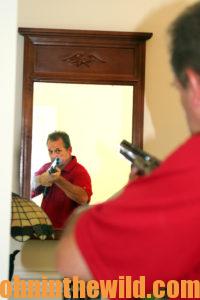
* Have Your Eyes Checked:
Vision problems that you may not be aware of can cause you to not shoot as accurately as you can in a dove field like I experienced later in my life. I didn’t know that I was cross-eyed dominant until I began to shoot trap, skeet and sporting clays. I shot left-handed, although I wrote right-handed. I’d close my right eye and aim with my left hand. However, to shoot accurately with a shotgun, you need to keep both eyes open, and your dominant eye should be on the same side of your body as the gun. Later I learned that my dominant eye was my right eye, yet I was shooting left-handed. So when I tried to keep both eyes open and shoot a shotgun, I was more likely to miss than shoot accurately. Too, I was 27-years old when I was diagnosed by a vision perception therapist with dyslexia. Although I had 20/20 eyesight, I had what’s known as eye switching. For eyes to work properly, they both had to look at the same thing at the same time. However, my left eye often would point and look in a different direction than my right eye, so my brain would perform eye switching – shutting down the vision in my left eye. Then I’d only see with my right eye.
Vision-perception therapists are used by many major-league sports teams. The faster a quarterback can see a tight end running across the middle of the field, the faster he can deliver the ball to where the tight end can catch it. The better a baseball player can see the ball coming toward him, the faster he can determine when to 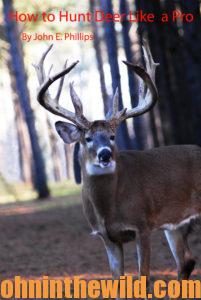 start his swing. I once had the opportunity to hunt with former Major League Baseball third baseman and shortstop, Travis Fryman, who had won several batting championships. When I asked Fryman, “How can you see a baseball going 90 miles an hour?” he smiled and said, “It’s easy. I’ve been looking at baseballs coming toward home plate all my life. Not only can I see a 90-mile-an-hour baseball coming toward me, but I also can see which way the seams are turning before it reaches the plate.”
start his swing. I once had the opportunity to hunt with former Major League Baseball third baseman and shortstop, Travis Fryman, who had won several batting championships. When I asked Fryman, “How can you see a baseball going 90 miles an hour?” he smiled and said, “It’s easy. I’ve been looking at baseballs coming toward home plate all my life. Not only can I see a 90-mile-an-hour baseball coming toward me, but I also can see which way the seams are turning before it reaches the plate.”
If you want to become a better shot, especially a better wing shot, have an eye exam, and perhaps complete a course in vision perception or practice exercises that improve how you see. The faster you can see a dove coming toward you, the better you can determine how and when to make the shot. You can visit https://visiontherapydirectory.com/ to learn more.
If you enjoy hunting all species of wild game, learn more by checking out John E. Phillips’ book, “How to Hunt Deer Like a Pro” in Kindle, print and Audible versions at http://amzn.to/YpoQHA. You may have to copy and paste the clicks in your browser.
Tomorrow: Learn about Guns and Shells for Dove Hunting

